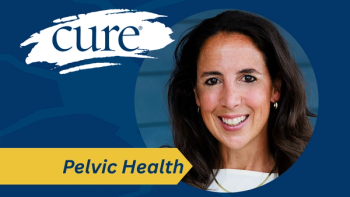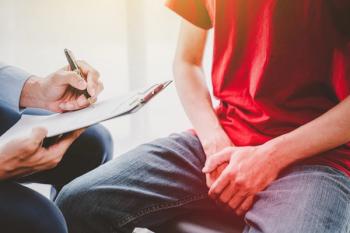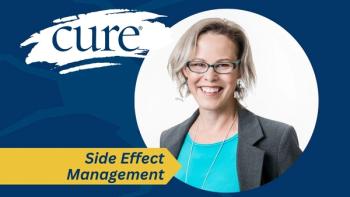
- Winter 2006
- Volume 5
- Issue 5
Cancer Myths
In an age of information abundance, myths about cancer abound.
There has never been more information about the cause, prevention and treatment of cancer. Record numbers of reports in the academic and lay press abound, and access to this information is greater than ever before. Yet the age-old practice of sharing and holding onto myths about cancer persists today—perhaps more than ever.
Healthcare workers routinely hear from patients: A positive attitude cures cancer. Pain associated with cancer treatment is so severe, it is better to forego it, as pain medication is barely effective and highly addictive. Surgery only spreads cancer.
Belief in such myths is far from anomalous. A survey commissioned by the American Cancer Society found that a whopping 41 percent of people believe treating cancer with surgery can spread the disease through the patient’s body, and 27 percent believe that the medical community is withholding a cure for cancer to boost profits.
While this and other recent studies found that some myths are intensified in minority groups, cancer myths permeate all populations. A 2006 Harris Interactive survey underwritten by pharmaceutical company Eli Lilly found that only 37 percent of women age 55 and older were concerned about developing breast cancer as they aged, although age is one of the top risk factors for developing breast cancer. Further, few people recognize the cancer risks associated with obesity, while the notions that underarm antiperspirant and underwire bras contribute to the development of breast cancer are among the top myths often associated with the disease, says Ted Gansler, MD, director of medical content for the American Cancer Society. “There are all these important things people need to know to prevent cancer and find it as early as possible. Meanwhile, focusing on things that are not significant might distract them,” Dr. Gansler says.
The risk of these beliefs is much graver than believers embarrassing themselves at a cocktail party. Myths can be one barrier to getting effective screening and making appropriate treatment decisions—both of which can result in decreased survival and increased chances of complications and mortality. “The big problem with myths is they lead people to not getting appropriate and timely therapy,” says Timothy Moynihan, MD, an oncologist at Mayo Clinic in Rochester. Distrust of the medical community can stand in the way of regular checkups, mammograms and colonoscopies, for example, while fear of surgery spreading cancer can prevent someone from having a surgical biopsy or invasive tumor removal, Dr. Moynihan says. Belief that pain medication is ineffective or addictive, as reported in the ACS study, is another myth that can cause needless suffering.
The conundrum is intensified when further breakdown of such stats point out that myths are often aligned tightly with certain minority groups and the poor—groups that often do not get the medical attention they need, says Dr. Moynihan. “The fact is that certain groups are seriously underserved by the medical community. They are uninsured and less often screened and treated for things like high blood pressure and diabetes,” he says. Access to care issues can include transportation and childcare, availability of healthy food and safe exercise. “Effective cancer screening is just one part of that very complex problem,” Dr. Moynihan says.
Case in point: Anita Patterson was 30 when she noticed a lump in her left breast. When a doctor dismissed her concerns because of her young age, she did too. “I always thought only older people got cancer,” says the resident of Wapato, Washington, and member of the Yakama Native American tribe. Five years later, she was diagnosed with breast cancer after doctors removed an egg-sized lump. Because of the aggressive nature of her tumor, doctors recommended mastectomy because of the increased risk of recurrence. Despite their urging, Patterson chose lumpectomy with radiation, as she had heard from others in her community about the pain associated with mastectomy.
“I thought, ‘I have to go back to work—I don’t want to go through that,’ ” says the married mother of three boys. Her concerns were complicated by what she says is a stigma in her community associated with losing a breast, as well as having a disease associated with white people. When the cancer returned five years later, she had a mastectomy. Patterson, now 45, says that if she had known the risks and understood the facts 15 years ago, she could have been saved years of emotional and physical pain.
Experts say there are real reasons some people hold onto myths about cancer and how it is detected and most effectively cured. On a fundamental human level, myths are perpetuated simply because people seek information from trusted sources, says Angelina Esparza, the American Cancer Society’s director of survivorship, quality of life and information. People will usually follow the screening and treatment directives of a healthcare provider, but in the absence of a long-term, trusting relationship with a physician and healthcare system, accurate information competes with messages from mass media and trusted friends and family. “Patients rely on their various sources for information about their healthcare—providers, television and family and friends,” Esparza says. “But with all of the competing messages, how is a patient to figure all of this out and know where to turn for information?”
Esparza, who has spent a dozen years working in minority health advocacy, says it is important to develop cancer education tools that take the culture of various communities into account. She cites the success of videos for Hispanic populations that use culturally appropriate scenarios to introduce information, as well as an emphasis on audio CDs and tapes to reach illiterate members of all groups. Since many patients obtain information from the Internet, it’s important to double-check it with reliable sources, including your physician and organizations like the National Cancer Institute.
The key is not to simply get the medical information to the population in an effort to dispel all myths, says Esparza. Instead, many widely held beliefs can be used to promote sound medical advice. “You’re not going to change people overnight,” she says. “What you can do is integrate information.” If a person relies on their community to make decisions, the medical team can use that support system to ensure adherence to a medical directive. If a person relies on prayer for medical healing, encourage that practice in addition to clinical treatment. “Start correcting what is wrong and fold it in together with what they are doing right,” Esparza says. “If we can blend these things and blend them well, we are providing the patient the best service.”
Experts agree that the most critical key to dispelling myths is a trusting doctor-patient relationship. “Once the vast majority of cancer patients are under the care of a qualified cancer specialist who takes time to explain the disease, their beliefs in myths will not persist,” says Dr. Gansler. Adds Dr. Moynihan: “We have to treat each person well, so that person will bring that trusted word back to their community. That’s the long-term fix. In the short-term, we have to establish trust.”
As for Patterson, she turned a negative situation into a positive. Women in her community often approach her with questions about their own cancer, including her younger sister Andrea Williams, who found a lump in her own breast at age 30—an age she would have thought was too young to be vulnerable to cancer if it were not for her sister. Patterson urged Williams to get a mammogram and early treatment once breast cancer was confirmed. “My experience was different than my sister’s,” says Williams, who is now in remission. “If it weren’t for my sister educating me, I wouldn’t have known what to do.”
Articles in this issue
almost 19 years ago
Message from the Editoralmost 19 years ago
Tossing and Turningalmost 19 years ago
Making New Plansalmost 19 years ago
A Different Kind of Caringalmost 19 years ago
A View of Cancer Care in Americaalmost 19 years ago
Letters from Our Readersalmost 19 years ago
Home-Brewed Gene Testsalmost 19 years ago
Cutting Out Hormonesalmost 19 years ago
Cancer Talesalmost 19 years ago
Physiology of Sleep




